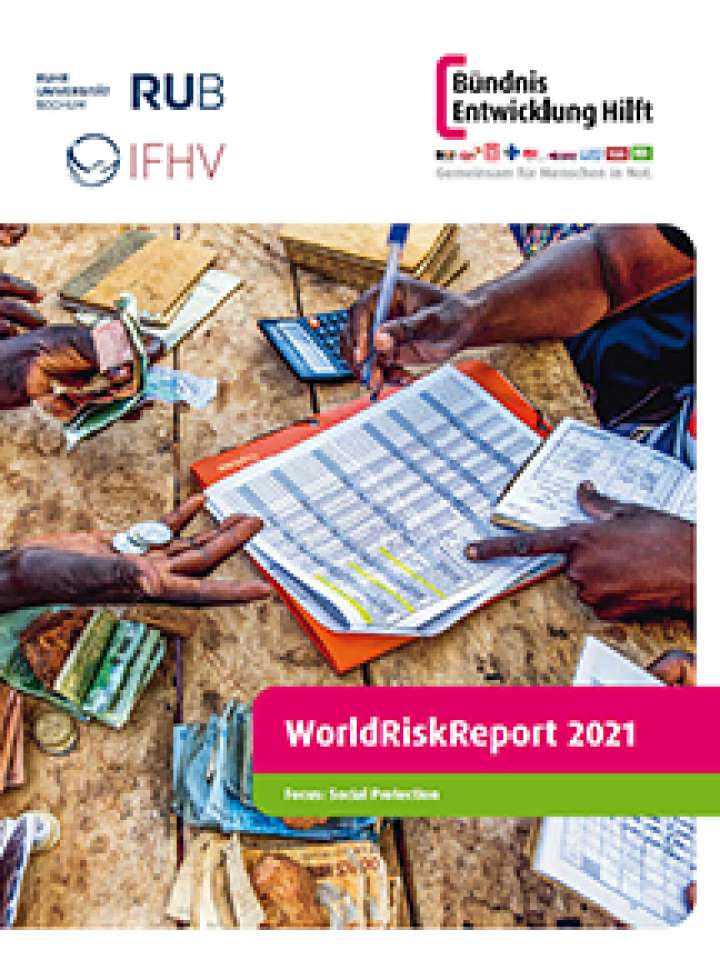World Risk Report 2021: Focus: Social protection
The WorldRiskIndex 2021 assesses the disaster risk for 181 countries. This covers almost 99 per-cent of the world’s population
Some key findings of the report:
- A total of ten island states are among the 15 countries with the highest disaster risk. Their risk profile is increasingly also determined by sea-level rise.
- The countries with the highest disaster risk worldwide are Vanuatu (WRI 47.73), the Solo-mon Islands (WRI 31.16), and Tonga (WRI 30.51).
- In a comparison of continents, Oceania has the highest disaster risk, mainly due to its high exposure to extreme natural events. Africa, the Americas, Asia, and Europe follow in descend-ing order of disaster risk
- Africa is the continent with the highest over-all societal vulnerability. Twelve of the 15 most vulnerable countries in the world are located there.
- Countries with low economic capacity and income tend to have higher vulnerability or lower capabilities in averting disasters. In these countries, extreme natural events often lead to further reductions in existing capacities.3
Social Protection
- Social protection contributes to reducing a society’s vulnerability to extreme natural events. In the event of a disaster, social protection must often be expanded at short notice to meet increased protection needs. Adaptive protection systems are particularly suitable for this purpose, as they can respond promptly to new protection needs and effectively cope with shocks such as the Covid-19 pandemic.
- Informal social protection systems, which include community-based institutions such as savings groups or grain banks, exist in parallel to formal, often state-run, protection systems
- Access to rights-based social protection systems has so far only been a reality for a minority of the world’s population. In many parts of the world, the Covid-19 pandemic has highlight-ed how unequally access to social protection is distributed. Without social protection, disasters exacerbate poverty, deepen existing in equalities, weaken resilience to future crises, and increase the need for humanitarian assistance.
- In reality, social protection systems do not always reach the people who depend on
- them. The causes for this may be institutional, communicative, social, or physical barriers – they often result from a combination of several factors.
- A Global Fund for Social Protection can help to ensure a protection floor is provided even in countries that do not have the financial means themselves. Beyond that, in crisis situations the fund could also help those countries that are dependent on international support due to short-term financial bottlenecks.
- Social protection is a task that must be financed from national resources. In this respect, inter-national co-financing of the systems can only be a temporary solution.
- While social protection has gained importance in reducing disaster risk and addressing the consequences of climate change in recent years, a more systematic linkage that creates synergies between the fields of action is still needed. For the purpose of Building Back Better, it is also important to integrate effective social protection measures for the mitigation of and adaptation to climate change into the recovery of the effects of the pandemic.
Explore further

Number of pages
74 p.
Publication year
2021